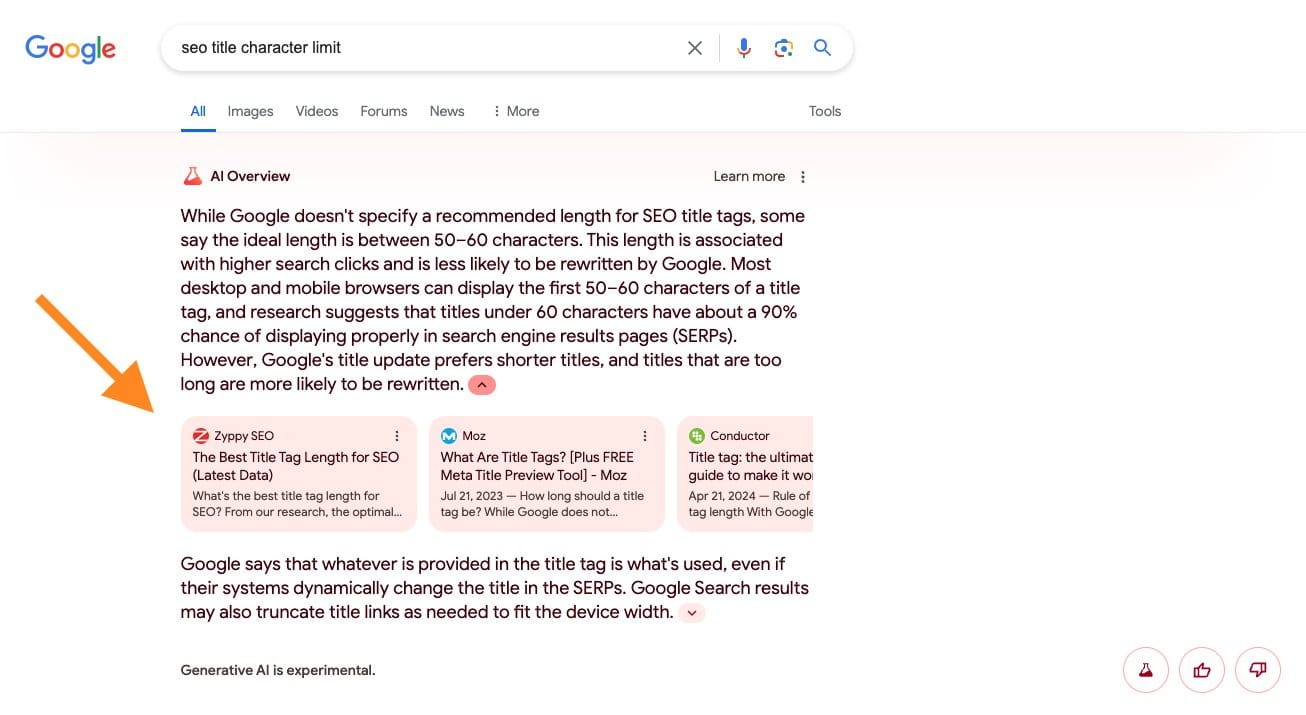So, they're finally here. Google has officially launched AI Overviews, previously known as Search Generative Experience (SGE), to the US audience. With plans to extend this feature to another 1 billion users by the end of the year, this marks one of the most significant changes to search and SEO in the last two decades.
You might ask, "How do we get our website ranking in this new AI Overview section?" I've been in touch with people experimenting with this technology while it is still being tested. The officially launched version of AI Overviews comes with important differences. In this blog post, we'll explain exactly what AI Overviews is, how it works, and, most importantly, how to get your website content ranking in this brand-new search engine.
What Are AI Overviews?
When you search on Google in regions where AI Overviews are active, you'll see an AI-generated section at the top of the page. This section summarises the information relevant to your query, with links to websites that corroborate the AI-generated text.

AI Overview Example Search Query
These overviews are powered by Google's large language model, Gemini. However, many believe this text isn't purely generated but a collection of curated content from various sources.
Below the AI Overview, the regular organic search results still appear, but there is a clear shift in how information is presented and accessed. Under each paragraph in the AI Overview, there are dropdown links to websites that support the information provided.
This introduces a new battleground for marketers: being featured in these AI Overviews to capture traffic directly from the search results.
How to Rank in AI Overviews
1. Be a Corroborating Source
The most straightforward way to leverage AI Overviews is to get your website listed as one of the corroborating sources. For instance, when searching "What is SEO?" companies like Semrush or Ahrefs are listed as a source in the AI Overview.
Ensuring that your website is linked in these summaries can drive significant traffic. Here are some steps to achieve this:
Create Relevant Content: Ensure your content is highly relevant to the specific queries that trigger AI Overviews.
Optimise Content Structure: Summarise answers at the top of your articles in clear, concise language.
Monitor and Adjust: Regularly check which queries generate AI Overviews and adapt your content to align with these summaries.
But be careful: Blindly copying results probably isn't a very smart, good long-term strategy!
2. Get Your Products or Services Recommended
Another strategy is to have your business, products, or services recommended directly within the AI Overviews. For example, if a query like "The Best Rope for Boxing" triggers an AI Overview, and your product is featured in the supporting links or recommendations, this can greatly enhance visibility and drive sales.
3. Optimise for Informational Queries
AI Overviews are more likely to appear for informational queries—questions starting with "what," "Who," "How," "when," "why," etc. Tailor your content to address these types of queries specifically.
4. Adopt Best Practices for Regular SEO
While AI Overviews introduce new tactics, traditional SEO remains foundational. Ensure your website is optimised with:
Keyword Research and Integration
High-Quality, Relevant Content Tailored to Your Audience
Fast Load Times and Mobile Optimisation
A Strong Backlink Profile
Good User Experience and Engagement Metrics
5. Adapt to Dynamic AI Answers
AI Overviews can be more dynamic than traditional search results. They may update frequently, requiring continuous monitoring and optimisation. If your content stops appearing in the AI Overviews, revisit and adjust your strategy to align with the latest summaries.
How it Might Work - According to a Google Patent
Below is a patent explaining how Google might select links for AI overviews. As many other experts have noted, reference links are selected after Google creates the AI Overview by finding documents that back up what it says.

Generative summaries for search results (Source)
Differences Between AI Overviews and SGE
The current version of AI Overviews differs significantly from its predecessor, SGE, particularly in the types of queries it addresses and the absence of follow-up question functionalities. AI Overviews are less prevalent for financial and local searches but still actively address medical and health-related queries.
Key Differences:
Reduced Search Types: AI Overviews now appear for fewer search types, especially avoiding sensitive financial queries.
No Follow-Up Questions: Unlike SGE, you can't ask follow-up questions in AI Overviews.
Dynamic Content: The AI Overview answers are more dynamic, often changing based on new information.
Preparing for Future Updates
Google is continuously testing and gathering feedback on AI Overviews, which means the functionality could expand or change. To stay ahead, keep your content optimised for current and potential future features.
Steps to Stay Prepared:
Regularly Update Content: Ensure your content stays relevant and aligned with the latest AI Overview formats.
Monitor Changes: Keep an eye on the queries that trigger AI Overviews and adapt your content accordingly.
Request Indexing: Request indexing via Google Search Console to expedite its visibility in AI Overviews after updating your content.
Conclusion
Google's launch of AI Overviews is a significant shift in how search results are presented and interacted with. While it introduces new challenges, it offers substantial opportunities for those who adapt quickly. By understanding how AI Overviews work and implementing strategic optimisations, you can ensure your website remains relevant and thrives in this new search landscape.
Are you excited about this new technology or concerned about its impact on your organic traffic? Share your insights and questions in the comments below.
Stay tuned for more updates and strategies to navigate the evolving marketing and sales world.

Jousef Murad
Founder of APEX




